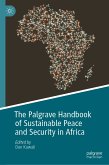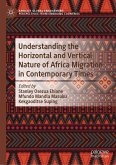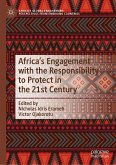This book examines the nature of conflict in Africa vis-à-vis the African Union (AU) peace and security architecture in Africa. It focuses on the intense campaign 'Silencing the Guns by 2020' since 2013, one of the flagship projects of Agenda 2063 to achieve a conflict-free continent by AU. It analyses various causes of conflict in Africa using case studies to pursue the causality and dynamics of these conflicts, which often point to the intersectionality of historical legacies of colonialism and neo-colonialism. It further examines the interplay of factors such as resource curse, resource exploitation, election-induced violence, political violence, incessant and interminable challenges of social justice, oppression, contemporary governance, and leadership dynamics. It also focuses on the application and integration of conflict and gender for analytical reflection. In the quest for a "Peaceful and secure Africa", this book examines the different mechanisms to prevent, manage, and resolve conflicts on the continent, and the challenges thereof. It probes and investigates by asking critical questions about continental conflict dynamics and peace architectures which warrants in-depth inquiry and interrogation.
Stanley Osezua Ehiane is a senior lecturer in the Department of Politics and Administrative Studies, at the University of Botswana. He is also a Senior Research Associate in the School of Public Management and Governance, College of Business and Economics, University of Johannesburg, South Africa.
Lukong Stella Shulika is a Research Associate at the Institute for the Future of Knowledge, University of Johannesburg, South Africa.
Clayton Hazvinei Vhumbunu is a Senior Lecturer in the Department of Political Studies and Governance at the University of Free State (UFS), South Africa.
Dieser Download kann aus rechtlichen Gründen nur mit Rechnungsadresse in A, B, BG, CY, CZ, D, DK, EW, E, FIN, F, GR, HR, H, IRL, I, LT, L, LR, M, NL, PL, P, R, S, SLO, SK ausgeliefert werden.









